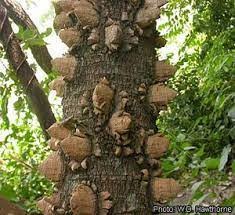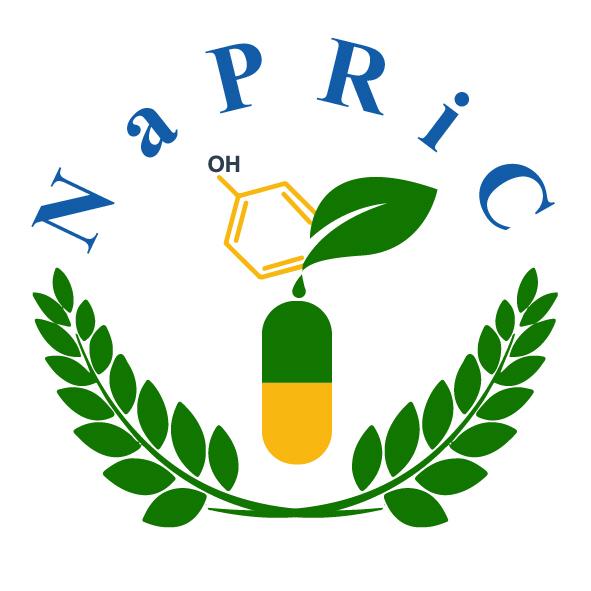Natural product-loaded nanoparticles for cancer therapy: formulation, characterisation, in silico and cellular studies.
Cancer is a dreadful disease affecting all categories of people globally. Treatments for cancer such as chemotherapy, radiation therapy, and surgical removal of tumors and / or combination therapies exist, but they present serious side effects to patients. There is significant interest in identifying well tolerated alternative therapies or re-engineering of the existing therapies. Natural products have been sought as sources of anticancer drugs. Unfortunately, therapeutic efficacies of anti-cancer compounds found in natural extracts are limited by their low bioavailability. In this study, the anticancer potential of natural products from four plant species was investigated. The use of nanoparticle drug delivery systems to enhance anticancer activity of β-sitosterol as a model natural products was also investigated. The plant species selected were: Zanthoxylum zanthoxyloides (Lam.) Zepern. and Timler, Aloe tororoana Reynolds, Aloe schweinfurthii var. labworana Reynolds, and Taberneamontana ventricosa Hochst. Ex. A.DC. Chromatographic separation of the plant extracts and structure elucidation using a combination of spectroscopic methods led to identification of 25 compounds. The extract of Z. zanthoxyloides yielded five compounds (80-84). Six compounds (5, 47, 85-88) were isolated from the extract from A. tororoana. Seven compounds consisting of three anthraquinone derivatives (89-91), one aryl derivative (92), one naphthaquinone (93) and two steroidal compounds (5 and 47) were isolated from A. schweinfurthii: Extracts from T. ventricosa yielded nine compounds consisting of five ibog-type indole alkaloids (94, 96, 98, 100 and 101), one vobasinyl-type indole alkaloid (95) and three non-alkaloidal compounds (97, 99 and 47). In vitro antiproliferative studies indicate that dihydrochelerythrine (81) inhibited proliferation of liver cancer (HCC) cells (IC50 8.9 μM) and breast cancer (BT549) cells, (IC50 21.2 μM). Similarly, sesamin (82) exhibited moderate inhibitory activity against BT549 cancer cells (IC50 47.6 μM). Ursolic acid (99) exhibited high inhibitory activity against A549 cells (IC50: 6.6 μM). Chrysophanol (89) was highly active against liver cancer (HCC) cells (IC50 2.4 μM) while voacristine (98) exhibited moderate inhibitory activity against liver cancer (HepG2) cells (IC50 23.0 μM). In silico docking studies were carried out to establish the possible mechanism of action of the isolated compounds against molecular targets in the p53 pathway. The results suggest that some of the compounds possibly inhibit cancer cell vi proliferation by inducing cell cycle arrest and apoptosis as evidenced by high binding affinities to cyclin-dependent kinases (CDK2 and CDK6), Bcl-2 protein and low binding affinities to caspases 3 and 8. In order to assess the effect of formulation into nanoparticles on bioavailability and efficacy, one of the isolated compounds, β-sitosterol was formulated into nanoparticles. Poly (lactide-co-glycolic acid) (PLGA) and block copolymers of poly (ethylene glycol)-block-poly (lactic acid) (PEG-PLA) were used to encapsulate β-sitosterol (β-Sit) into nanoparticles. β-Sitosterol-loaded PLGA and PEG-PLA nanoparticles (β-Sit-PLGA and β-Sit-PEG-PLA) were prepared by simple emulsion-solvent evaporation technique. The nanoparticles were characterized for particle size, polydispersity index (PDI), surface charge (ζ) and encapsulation efficiency. β-Sit-PLGA and β-Sit-PEG-PLA nanoparticles were spherical in shape with average particle sizes of 215.0±29.7 and 240.6±23.3 nm, ζ of -13.8±1.61 and -23.5±0.27 mV, respectively, and PDI < 0.2. The encapsulation efficiencies of β-Sit were 62.89±4.66 and 51.83±19.72 % in PLGA and PEG-PLA nanoparticles, respectively. Cellular internalization and antiproliferative activities of the formulated nanoparticles were studied in MCF-7 and MDA-MB-231 human breast cancer cells using flow cytometry, laser scanning confocal microscopy and MTT assays, respectively. Fluorescence activated cell sorting analysis (FACS) indicated that β-Sit-PLGA nanoparticles were internalized by both cell lines compared to β-Sit-PEG-PLA and the respective blank nanoparticles. β-Sit-PLGA nanoparticles were therefore selected to evaluate antiproliferative activity. Cell viability was inhibited by up to 80% in a concentration range of 6.64-53.08 μg/mL of β-Sit in nanoparticles compared to the untreated cells. The release of β-Sit from the nanoparticle matrix was studied in vitro in PBS and PBS/with 0.2% Tween20 which showed an initial burst release in 24 hours followed by a sustained release. Stability studies showed that β-Sit-PLGA nanoparticles were generally more stable in a protein rich medium (PBS/FBS) whereas β-Sit-PEG-PLA nanoparticles had a tendency to aggregate. The results of this study indicate that, compounds 81, 82, 89, 98 and 99 hold potential as anticancer agents. Furthermore, encapsulation of β-Sit in PLGA nanoparticles is a promising strategy to enhance anticancer activity against breast cancer cells.

